he effect of sex and performance level on pacing in cross-country skiers:Vasaloppet 2004-2017
Pntelis Theodoros Nikolidis,Elis Villiger,Bet Knechtle,c,*
aExercise Physiology Laboratory Nikaia 18450,Greece
bInstitute of Primary Care,University of Zurich,Zurich 9000,Switzerland
cMedbase St.Gallen Am Vadianplatz,St.Gallen 9001,Switzerland
Abstract Background:Pacing,defined as percentage changes of speed between successive splits,has been extensively studied in running and cycling endurance sports;however,less information about the trends in change of speed during cross-country(XC)ski racing is available.Therefore,the aim of the present study was to examine the effect of performance(quartiles of race time(Q),with Q1 the fastest and Q4 the slowest)level on pacing in the Vasaloppet ski race,the largest XC skiing race in the world.Methods:For this purpose,we analyzed female(n=19,465)and male(n=164,454) finishers in the Vasaloppet ski race from 2004 to 2017 using a one-way(2 sexes)analysis of variance with repeated measures to examine percentage changes of speed between 2 successive splits.Overall,the race consisted of 8 splits.Results:The race speeds of Q1,Q2,Q3,and Q4 were 13.6±1.8,10.6±0.5,9.2±0.3,and 8.1±0.4 km/h,respectively,among females and 16.7±1.7,13.1±0.7,10.9±0.6,and 8.9±0.7 km/h,respectively,among males.The overall pacing strategy of finishers was variable.A small sex×split interaction on speed was observed(η2=0.016,p < 0.001),with speed difference between sexes ranging from 14.9%(Split 7)to 27.0%(Split 1)and larger changes in speed between 2 successive splits being shown for females(p< 0.001,η2=0.004).A large performance× split interaction on speed,with Q1 presenting the smallest changes of speed between splits,was shown for females(η2=0.149,p <0.001)and males(η2=0.169,p < 0.001).Conclusion:Male and fast XC skiers are more even pacers.Coaches and athletes should develop tailored sex-and performance-level pacing strategies;for instance,they should advise fast XC skiers to start fast and maintain their speed,rather than starting slowly and trying to make up time by going faster at times during the race.
Keywords:Endurance exercise;Race speed;Sex;Sport performance;Winter sport
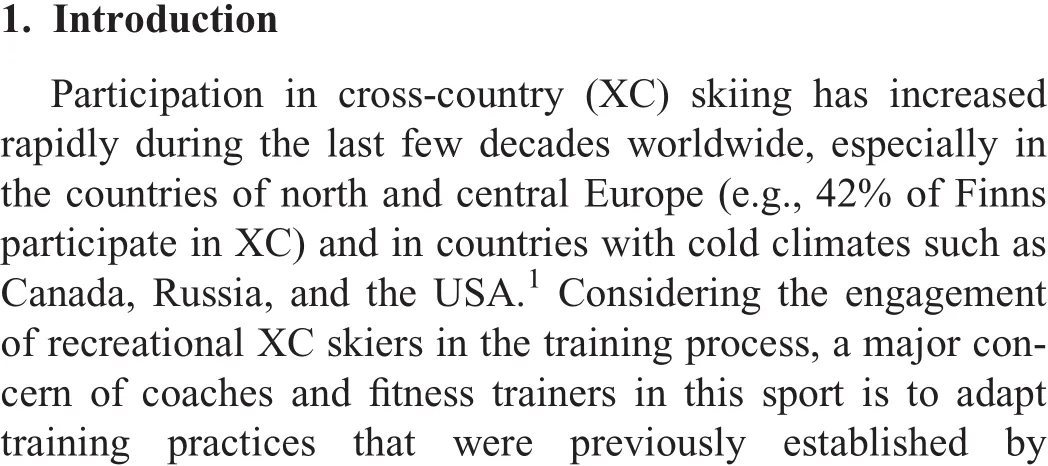

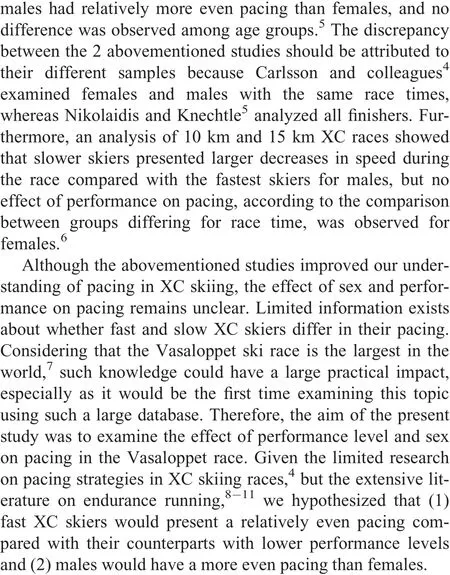
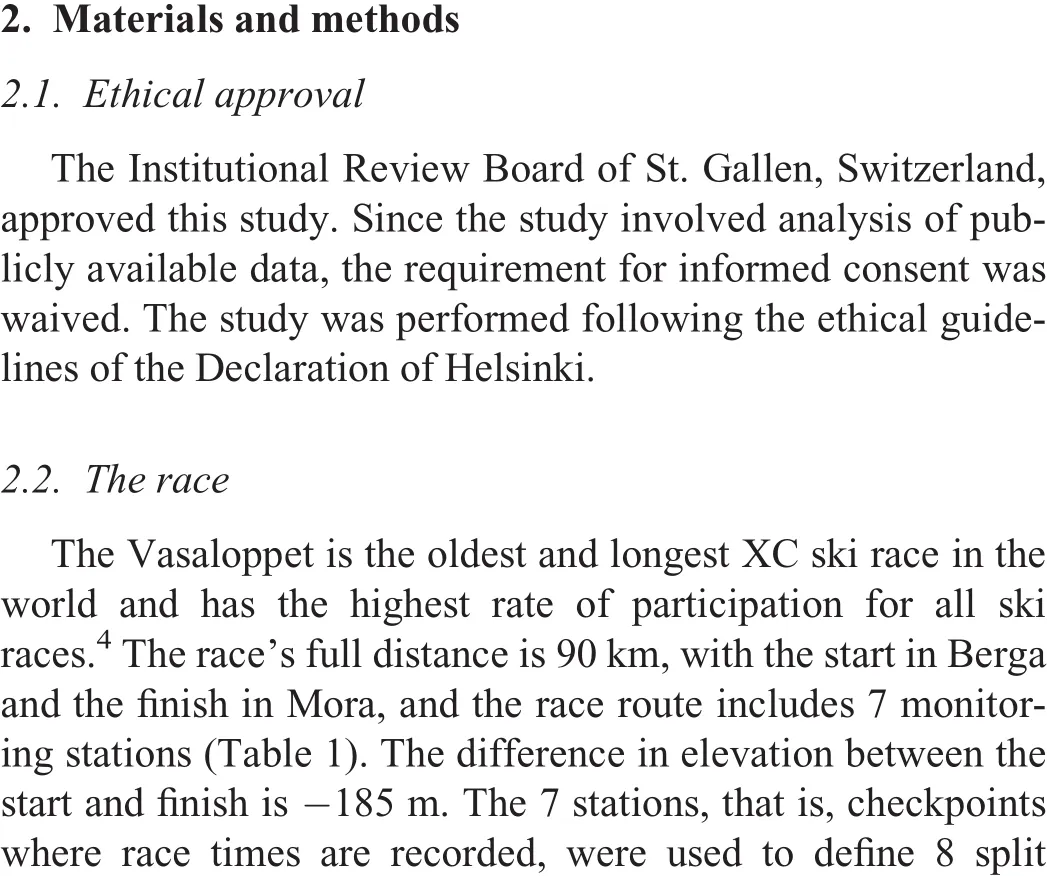

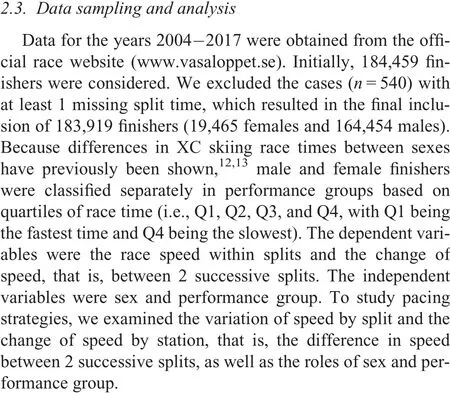
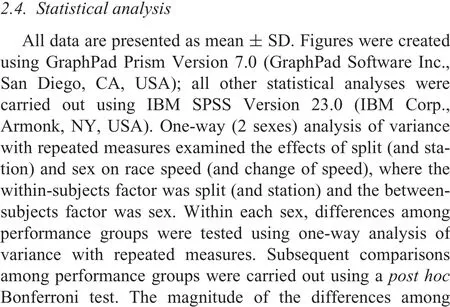

Table 1 Track profile showing the stations,their distance from the start,split distance,elevation,and change in elevation.
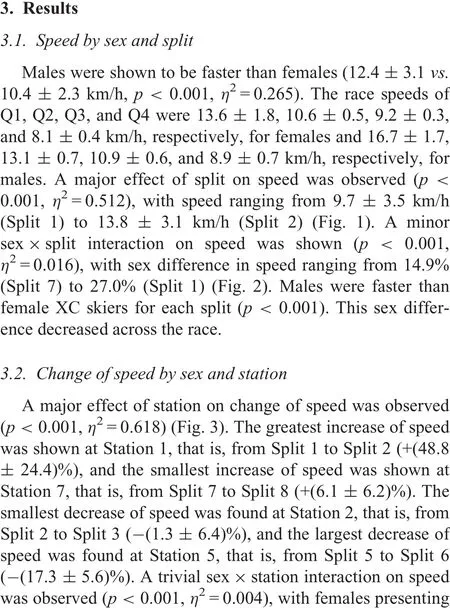
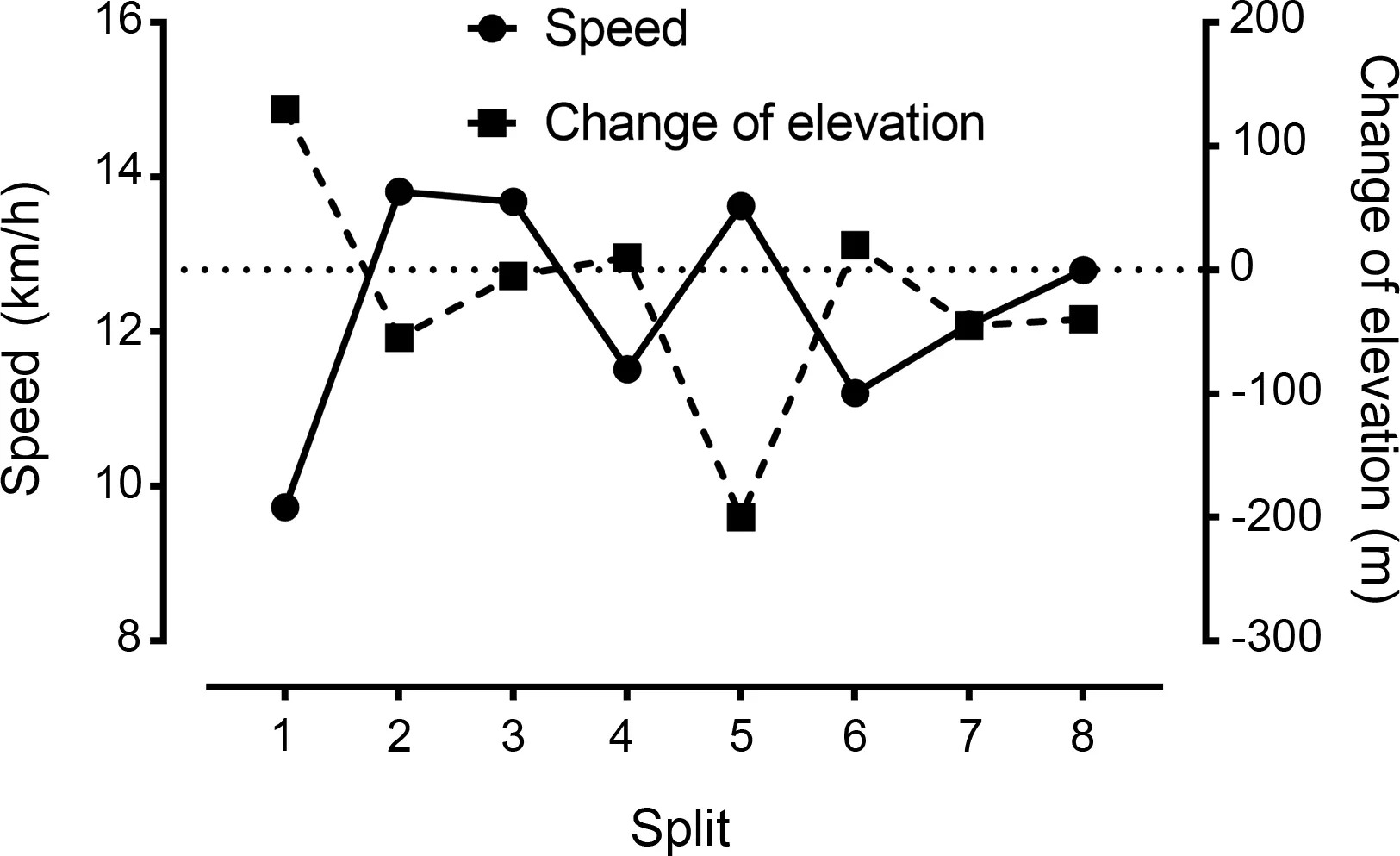
Fig.1.Race speed and change of elevation by split.The horizontal dotted line represents 0 change of elevation.Race speed of split is calculated from the distance and time of the split.Change of elevation in the split was defined as the difference between the elevation of the following station and the preceding station.All splits differed for speed at p<0.001.
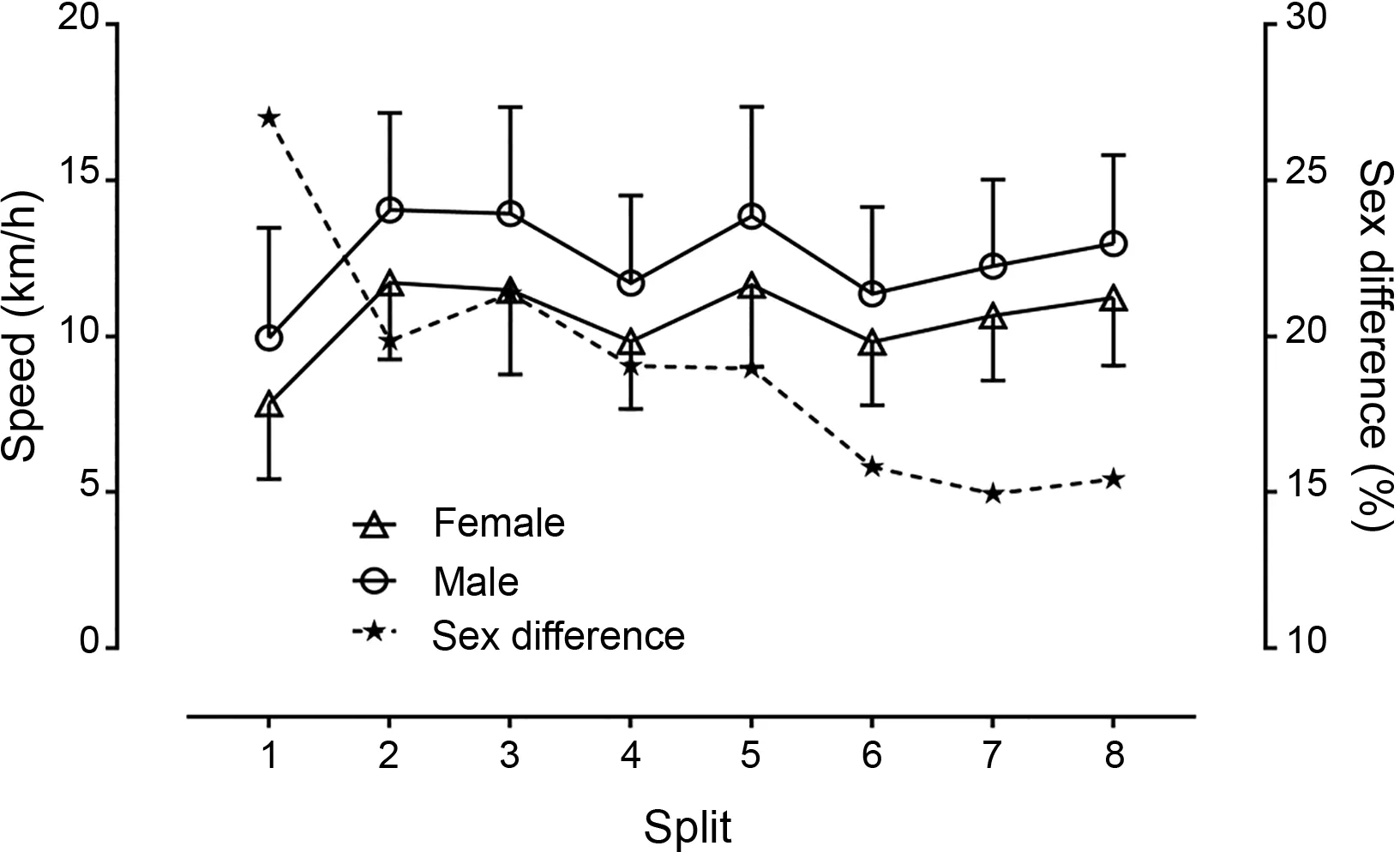
Fig.2.Race speed of finishers by split and sex.Sex difference(%)was calculated as 100% × (male’s speed-female’s speed)/female’s speed.Error bars represent standard deviations.Sex difference was significant for each split at p<0.001.


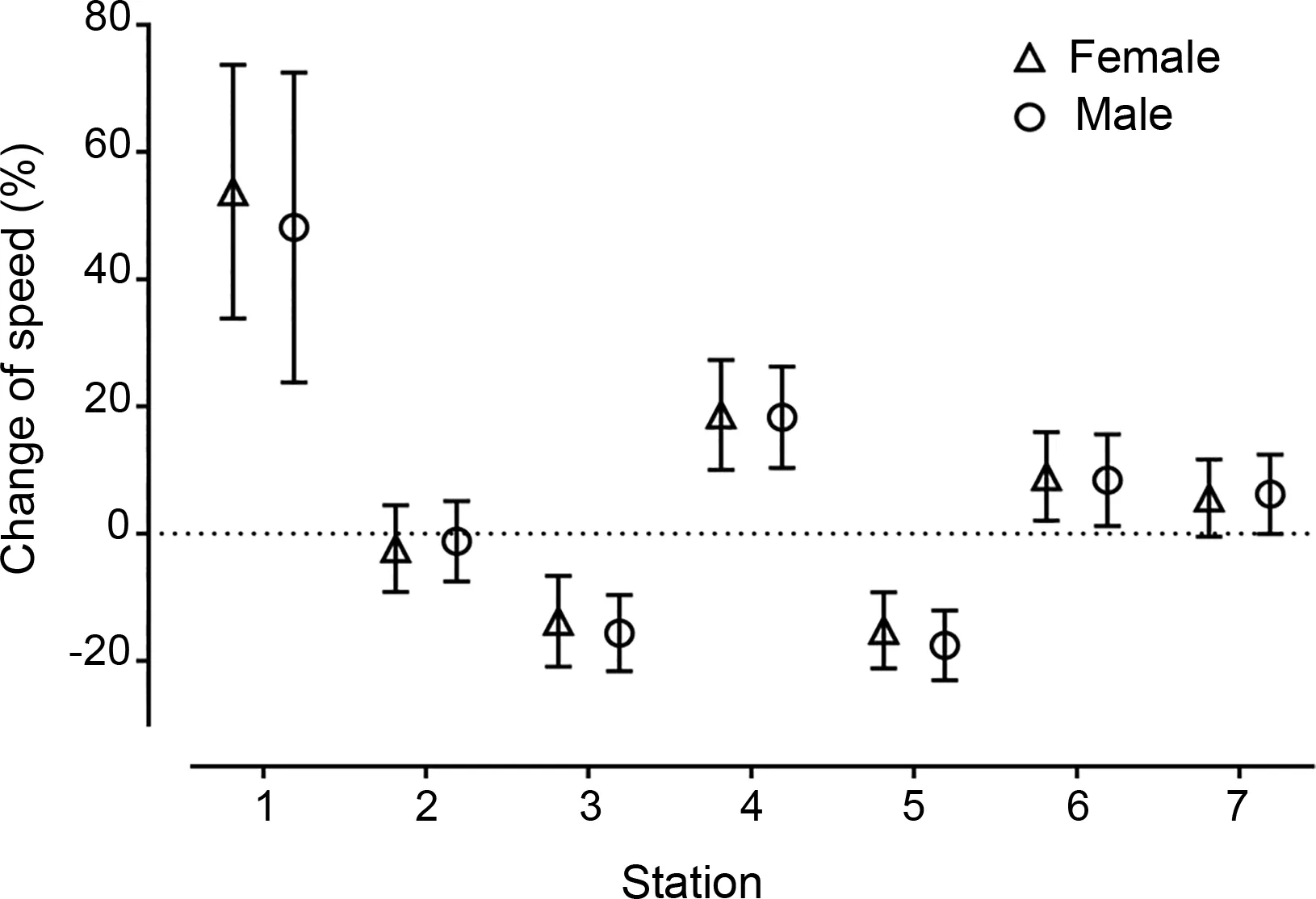
Fig.3.Change of speed of finishers by station and sex.The horizontal dotted line represents 0.Error bars represent standard deviations.All stations differed for change of speed(%)from the preceding to the following split at p<0.001.Females and males differed for change of speed(%)in all stations at p<0.001.
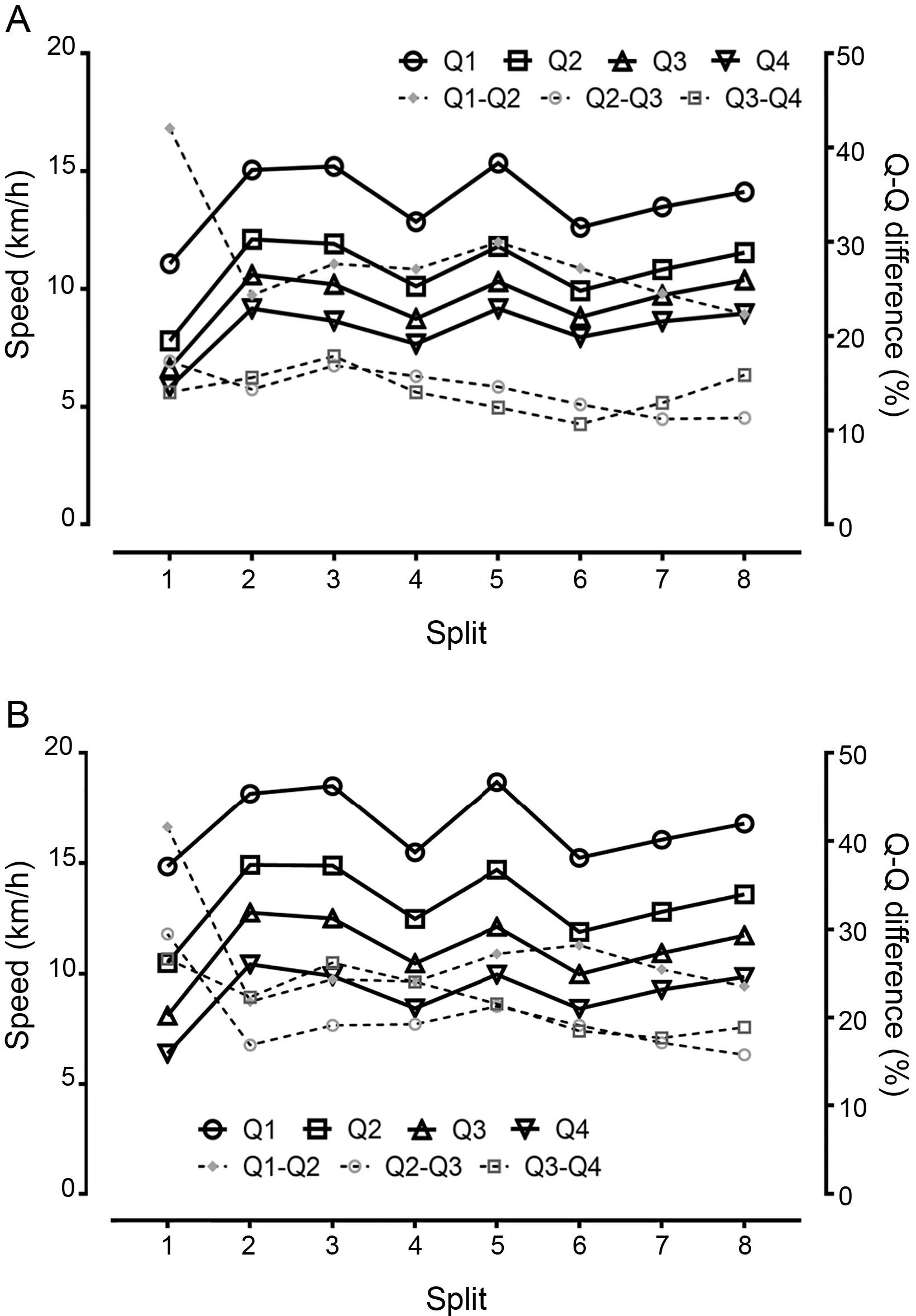
Fig.4.Race speed of finishers by split in female(A)and male(B).Q=quartile;Q-Q=interquartile.Q-Q difference was calculated as 100%×(faster quartile-slower quartile)/slower quartile.Interquartile differences in speed were significant at p<0.001 for each split.

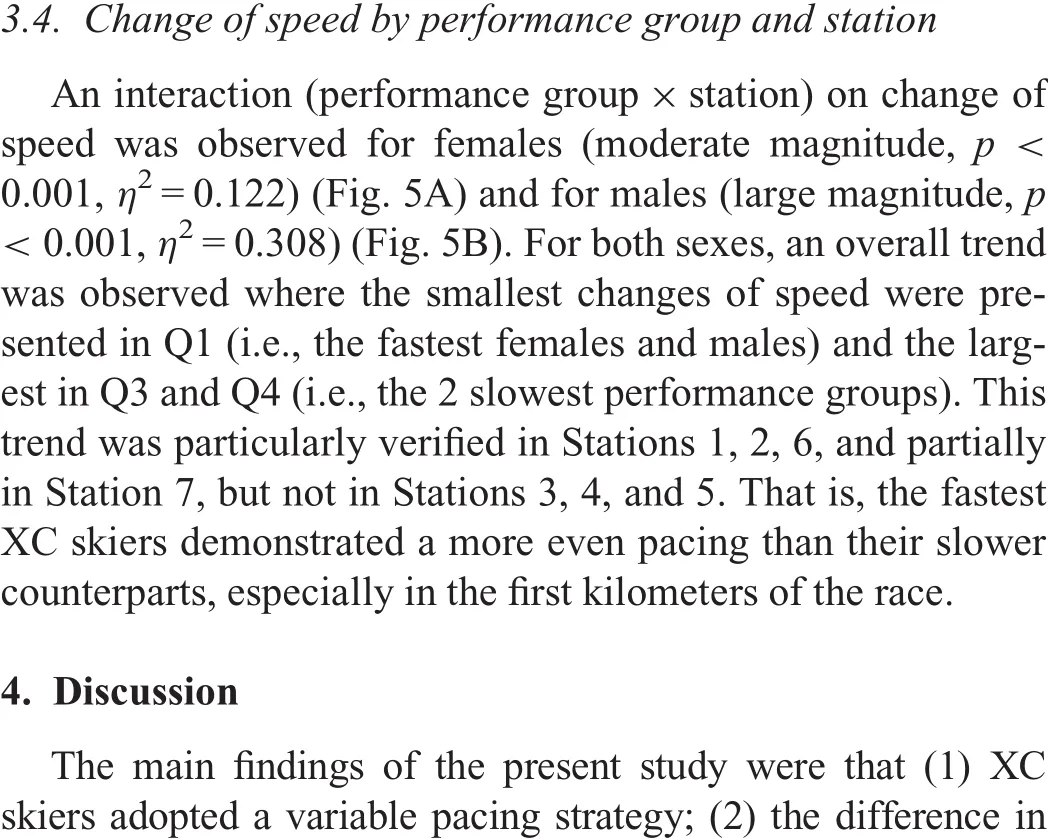
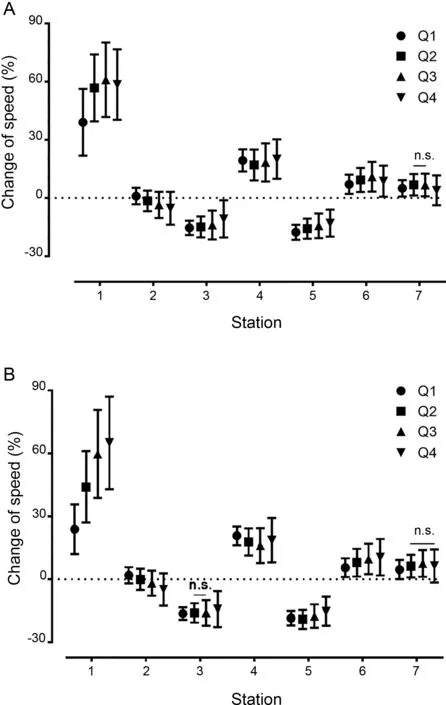
Fig.5.Change of speed of finishers by split in female(A)and male(B).The horizontal dotted line represents 0.Error bars represent standard deviations.Performance groups differed for change of speed(%)—for instance,from the previous to following split—in all stations and for both sexes at p < 0.001,in all cases except if the difference is depicted as nonsignificant(n.s.).
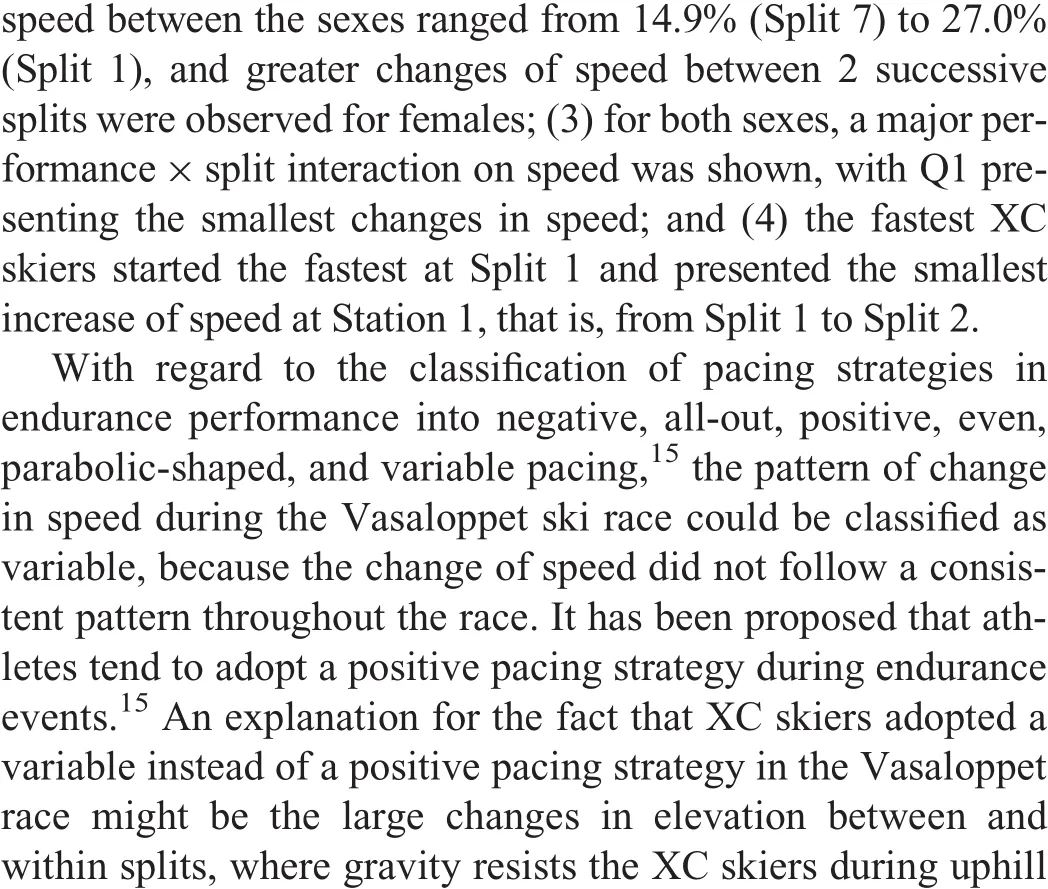

 Journal of Sport and Health Science2018年4期
Journal of Sport and Health Science2018年4期
- Journal of Sport and Health Science的其它文章
- Sport participation and vigilance in children:In fluence of different sport expertise
- Pacing and predictors of performance during cross-country skiing races:A systematic review
- he in fluence of physiobiomechanical parameters,technical aspects of shooting,and psychophysiological factors on biathlon performance:A review
- Limb symmetry index in competitive alpine ski racers:Reference values and injury risk identification according to age-related performance levels
- A comparison of lower limb stiffness and mechanical muscle function in ACL-reconstructed,elite,and adolescent alpine ski racers/ski cross athletes
- he BRICS Council for Exercise and Sport Science(BRICSCESS)—A new era has dawned
